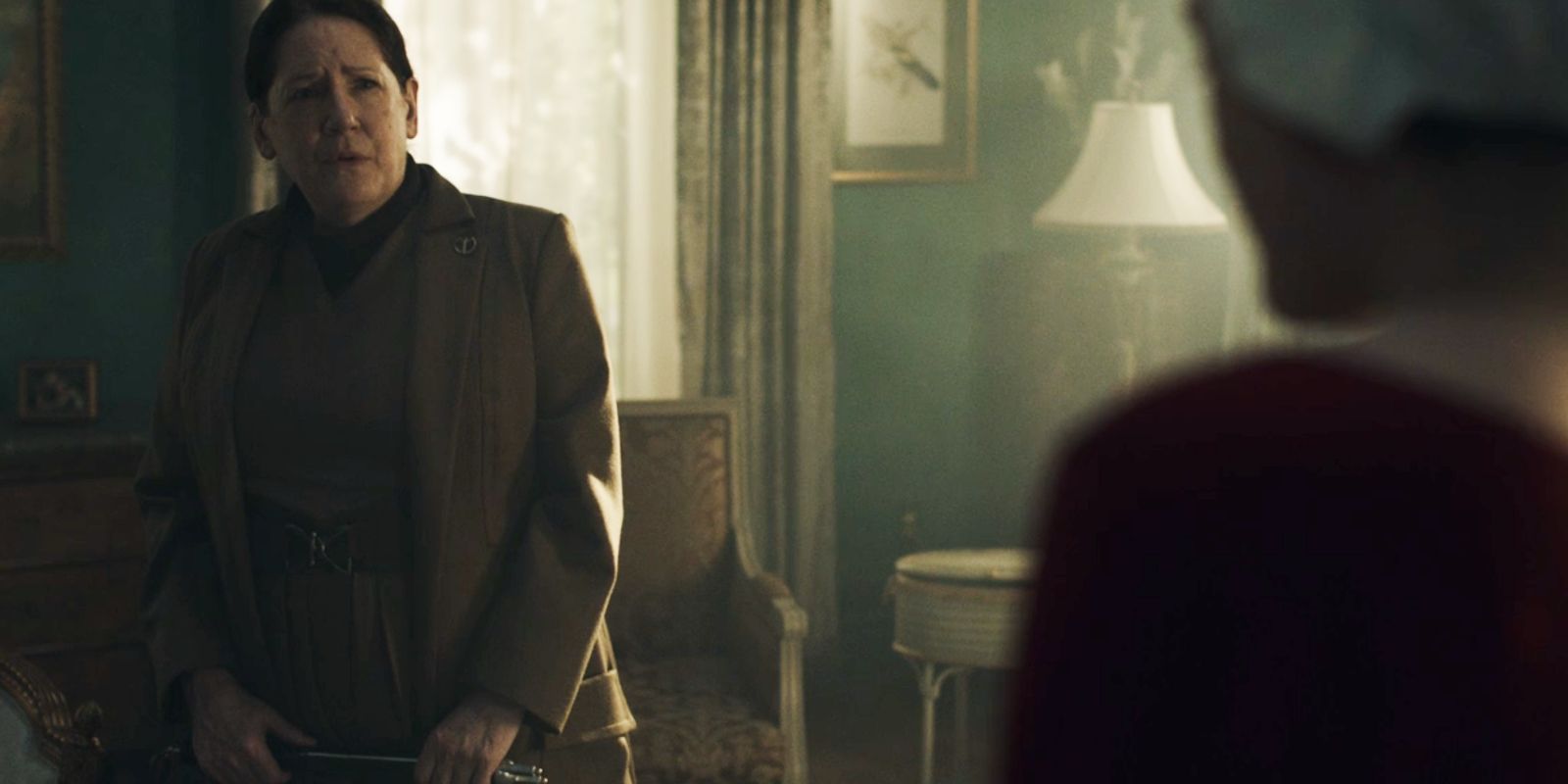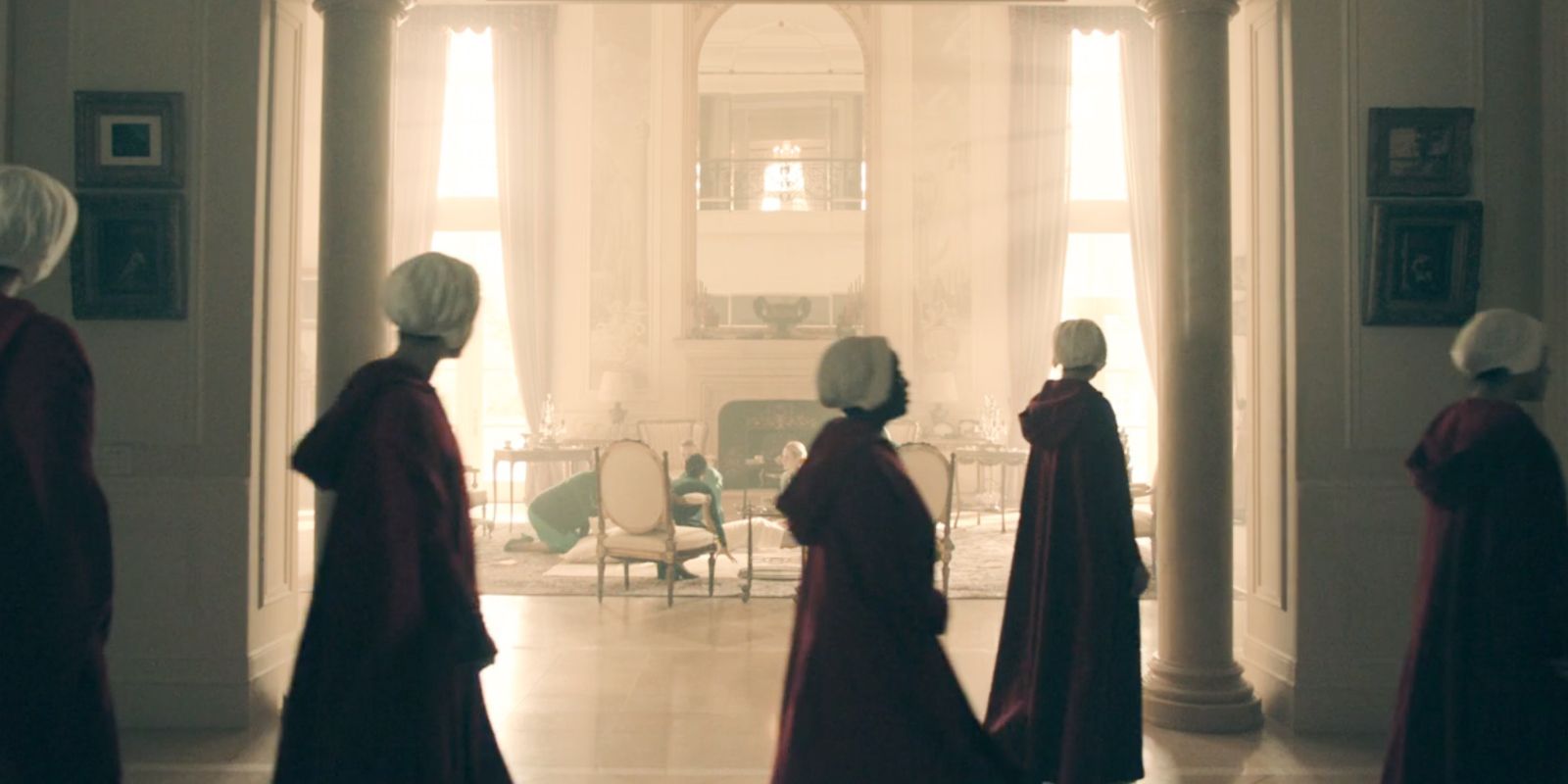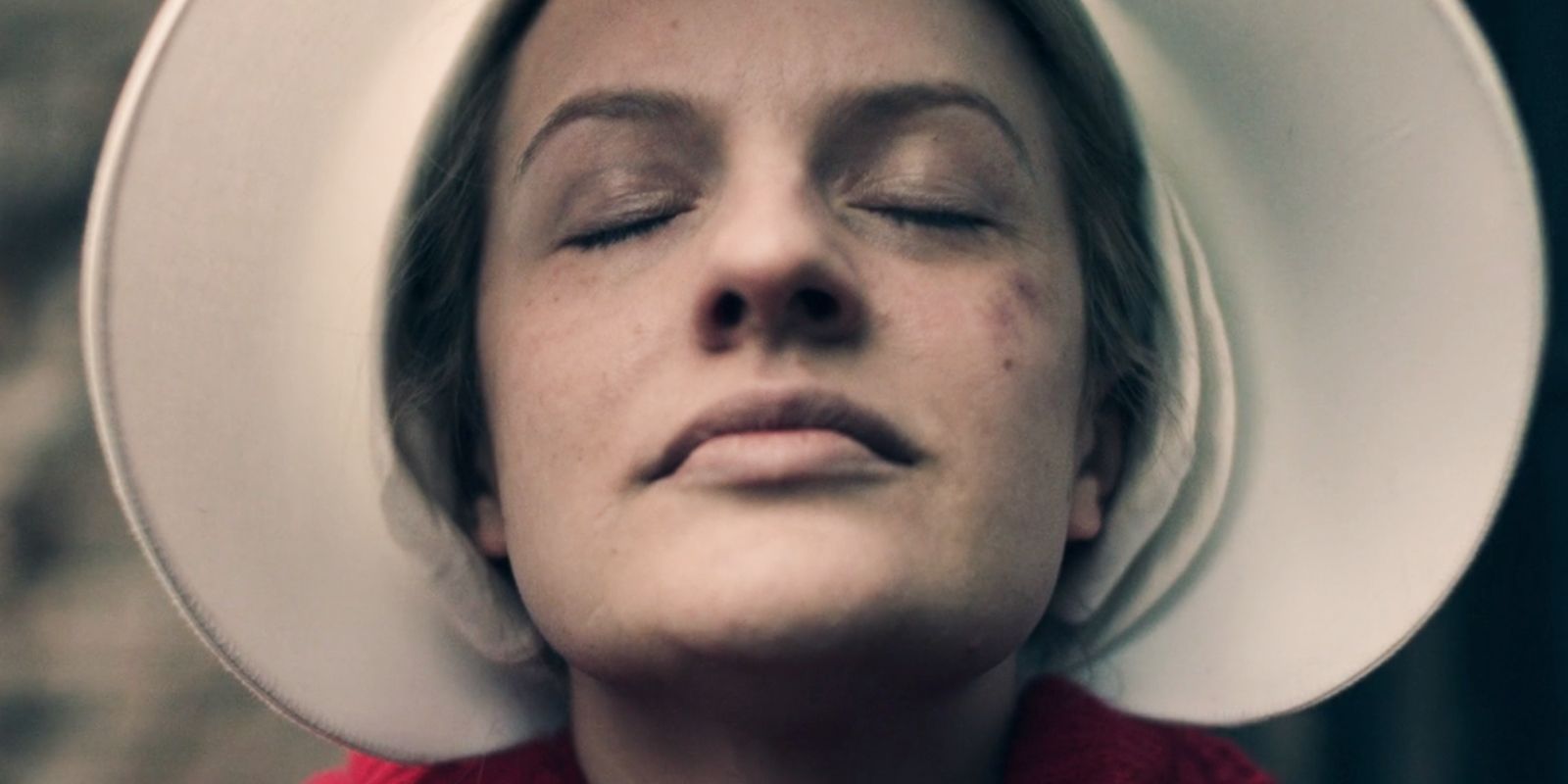Creator Bruce Miller brought the best-selling dystopian account of The Handmaid’s Tale to television, and to great acclaim, but tweaked several prominent aspects of Margaret Atwood’s famous novel. Back in 2017, announcements that Atwood’s heavy satire would be produced as a Hulu original series excited readers of the original book, and Atwood enthusiasts were pleasantly rewarded with an accurate adaptation of The Handmaid’s Tale novel.
Led by Elizabeth Moss from the principal perspective of Offred, The Handmaid’s Tale became an overnight sensation worthy of the accolades it fairly quickly amassed. What heightened the show’s winning qualities even more was Atwood’s function as The Handmaid’s Tale series’ consulting producer (per Vanity Fair). Although she was not equipped with governing power in production, any adjustment to the story was assessed by Atwood herself, creating the most effective but authentic television adaptation Hulu could produce. Over the course of the series, eight significant changes were made.
8 The Handmaid’s Tale Series Reveals Offred’s Name
Perhaps one of the most noticeable changes to The Handmaid’s Tale novel is Bruce Miller’s decision to reveal Offred’s name. In the series and the novel respectively, handmaids are named from the household they are given to; Offred is given to Commander Fred Waterford (Joesph Fiennes), hence she is “of Fred.” The novel does not confirm Offred’s birth name as June like the series does, although there are theories and guesses that a scene in the novel suggested that to be the case.
Miller ran with this small scene in The Handmaid’s Tale literature and confirms her name. Atwood never intended for Offred’s identity to come about in order to stress the political subjugation of women in The Handmaid’s Tale’s Gilead, but the show needed its main protagonist to fight for something – holding on to her identity became a driving force that pushed her narrative past the boundaries of Atwood’s novel and through a whopping six seasons. Her real name, June, is also especially helpful in traversing the numerous flashbacks that show audiences who she was when she was free.
7 The Depiction Of The Waterford’s Is Different In The Series
The Waterfords are Offred’s handlers, and the series and novel’s primary liaisons of The Handmaid’s Tale’s antagonistic government of Gilead. In the television series, however, Serena Joy (Yvonne Strahovski) and Fred Waterford are much younger and represent the theocratic, power hungry elite bent on repopulating the country through any, and often repressing, means. The novel depicts the Waterfords much differently as an older couple.
The changes made to the Waterfords alter the dynamic between them and June significantly. It’s assumed in both the novel and the series that Serena Joy is incapable of producing her own child. As Serena is closer in age to June and a proponent of Gilead in the series, her relation to June and the role of handmaids is a lot more violent and conniving, especially because her infertility rouses so much of her hatred.
6 The Handmaid’s Tale Gives Nick A More Prominent Role
Nick Blaine (Max Minghella), a driver for the Commanders of Gilead, is afforded a much larger role in The Handmaid’s Tale series. He and June foster a relationship with each other and build a strong enough bond for cracks in Nick’s facade to show. He even uses his position in Gilead’s secret police, the Eyes, to gather classified information for his advantage and to help June when he can without compromising his job. This is a far cry from his role in Atwood’s novel, for by the end of the book, readers are left wondering about Nick’s true intentions and whether he uses his knowledge for the benefit of the Eyes or for the aid of the victims of Gilead.
5 The Handmaid’s Tale Series Provides Backstory To Supporting Characters
There are a fair amount of The Handmaid’s Tales’s supporting characters who simply don’t receive much backstory in Atwood’s literature. A prime example comes in Aunt Lydia (Ann Dowd) who is a brutal enforcer of the rules and regulations followed by the handmaids in both the novel and the series. However, Aunt Lydia does not deviate from the role of a simple background character in Atwood’s book.
Because the novel is shown solely from the perspective of Offred, there are characters, world building characteristics, and hidden horrors that The Handmaid’s Tale series can willfully explore outside the limits of Offred’s viewpoint. While the series focuses on Offred’s storyline, it also occasionally expands its scope to components surrounding her to broaden audiences’ understanding of Gilead and its inhabitants. With this ability, The Handmaid’s Tale series allows for more insight into roles like Aunt Lydia’s and aspects of Offred’s world than what the book could provide.
4 The Handmaid’s Tale’s Gilead Is More Diverse On Screen
Many modern adaptations of older creative projects have diversified their casting to better depict real life, and The Handmaid’s Tale television show is no different. Atwood’s literature chose to have Gilead separate people of different races in a similar course of action to other totalitarian governments led by political ideology, but the series, opting to diversify its characters, didn’t take this course. Many characters represent different races and sexualities, with the idea behind the change being that it was needed for a modern take on the story.
3 The Handmaid’s Tale Modernizes The Novel
Miller also had to take into account advancements in technology that have come about since The Handmaid’s Tale’s 1985 publication. The Handmaid’s Tale account is set in the near future – the impending catastrophe of it all adds to the very realistic horror that something like Gilead could actually transpire. In order for modern audiences to fully understand this sentiment, Miller needed to modernize The Handmaid’s Tale account; in the series, audiences can spot smartphones, references to Uber, and upgrades from the handmaids’ serialization tattoos to full on tracking tags, among several other modern developments.
2 Offred Is More Rebellious In The Handmaid’s Tale Series
Given the nature of Gilead’s sovereign rule, handmaids are expected to be obedient and docile participants in the repopulation of the nation. The Handmaid’s Tale novel finds Offred to be a much more passive victim of her society, and understandably so, as her will to survive takes precedence over her will to rebel. The series differs tremendously with Offred, equipped with the desire to hold strong to her innate June identity, fighting back in any way she possibly can against her oppressors.
Miller offers an interesting dichotomy within June in The Handmaid’s Tale series. While her behavior is defined by rigid obedience, her internal monologue is rife with hatred, rebellion, and a yearning for freedom that pushes her toward her goals in season 1 and beyond. The characterization of June offered by Miller is what propels her narrative further and makes for an immensely likable live-action character audiences can root for.
1 Offred’s Narrative Is Continued Past Atwood’s Novel
The most important element of The Handmaid’s Tale series not found in Atwood’s work is June’s continued narrative. June’s individual storyline ceases to exist at the end of The Handmaid’s Tale novel, the series equivalent to the conclusion of season 1. Additional seasons naturally allowed the series to create more chapters to her story. With The Handmaid’s Tale season 6 currently underway, her story remains unfinished even now.
This story originally appeared on Screenrant








